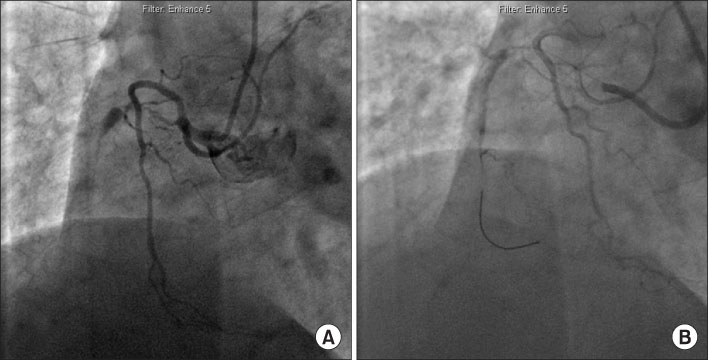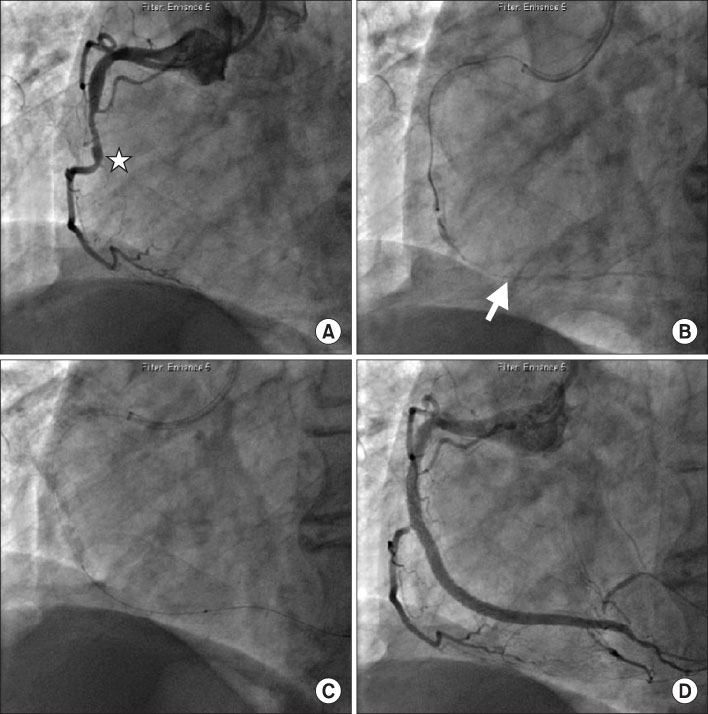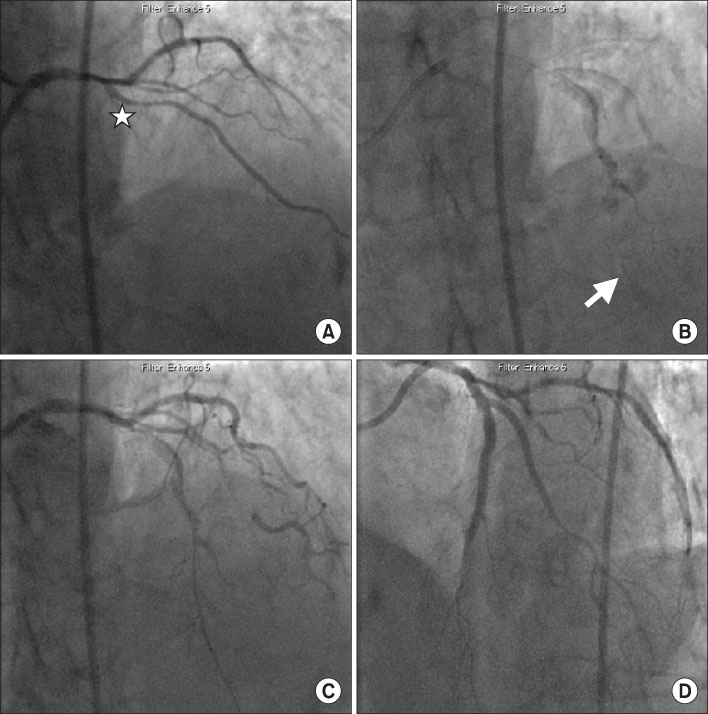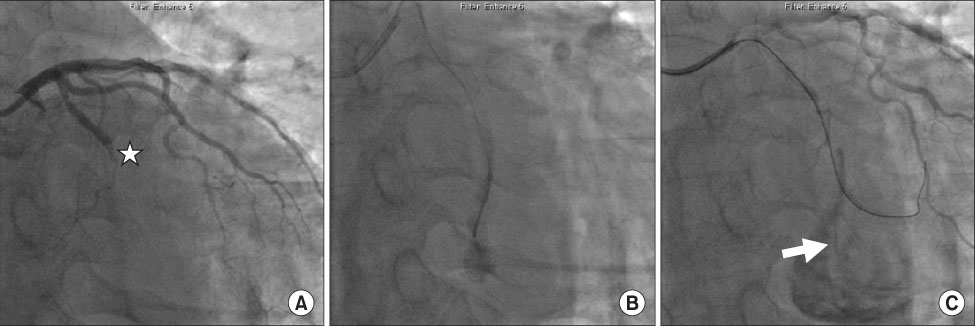Chonnam Med J.
2010 Dec;46(3):183-188. 10.4068/cmj.2010.46.3.183.
Subintimal Tracking and Re-entry (STAR) Technique with Contrast Guidance for Chronic Total Occlusion: Experience with 4 Cases
- Affiliations
-
- 1Department of Internal Medicine, Gwangju Veterans Hospital, Gwangju, Korea. gpkwy@naver.com
- 2Department of Internal Medicine, Yeosu Chonnam Hospital, Yeosu, Korea.
- KMID: 2116773
- DOI: http://doi.org/10.4068/cmj.2010.46.3.183
Abstract
- Percutaneous coronary intervention for chronic total occlusion of coronary arteries remains technically challenging. It shows lower procedural success rates compared with other lesion subsets. It is for this reason that interventional cardiologists have developed many techniques to recanalize chronically occluded arteries. Among them, we experienced some cases in which we used the subintimal tracking and re-entry (STAR) technique. Here we report our experience with a review of the literature.
MeSH Terms
Figure
Reference
-
1. Christofferson RD, Lehmann KG, Martin GV, Every N, Caldwell JH, Kapadia SR. Effect of chronic total coronary occlusion on treatment strategy. Am J Cardiol. 2005. 95:1088–1091.
Article2. Stone GW, Kandzari DE, Mehran R, Colombo A, Schwartz RS, Bailey S, et al. Percutaneous recanalization of chronically occluded coronary arteries: a consensus document: part I. Circulation. 2005. 112:2364–2372.
Article3. Stone GW, Reifart NJ, Moussa I, Hoye A, Cox DA, Colombo A, et al. Percutaneous recanalization of chronically occluded coronary arteries: a consensus document: part II. Circulation. 2005. 112:2530–2537.
Article4. Colombo A, Mikhail GW, Michev I, Iakovou I, Airoldi F, Chieffo A, et al. Treating chronic total occlusions using subintimal tracking and reentry: the STAR technique. Catheter Cardiovasc Interv. 2005. 64:407–411.
Article5. Carlino M, Godino C, Latib A, Moses JW, Colombo A. Subintimal tracking and re-entry technique with contrast guidance: a safer approach. Catheter Cardiovasc Interv. 2008. 72:790–796.
Article6. Erlich I, Strauss BH, Butany J. Stent thrombosis following the STAR technique in a complex RCA chronic total occlusion. Catheter Cardiovasc Interv. 2006. 68:708–712.
Article7. Schwartz RS, Chronos NA, Virmani R. Preclinical restenosis models and drug-eluting stents: still important, still much to learn. J Am Coll Cardiol. 2004. 44:1373–1385.
Article
- Full Text Links
- Actions
-
Cited
- CITED
-
- Close
- Share
- Similar articles
-
- Reverse Controlled Antegrade and Retrograde Subintimal Tracking in Chronic Total Occlusion of Right Coronary Artery
- Iteration of Reverse Controlled Antegrade and Retrograde Tracking for Coronary Chronic Total Occlusion Intervention: a Current Appraisal
- The Outback(R) LTDtrade mark Catheter: The Novel Re-Entry Technique in Recanalization of Chronic Inflow Occlusion of the Superficial Femoral Arteries in 3 Cases
- Successful Recanalization of a Long Superficial Femoral Artery Occlusion by Retrograde Subintimal Angioplasty After a Failed Antegrade Subintimal Approach
- Procedural and Early Outcomes of Two Re-entry Devices for Subintimal Recanalization of Aortoiliac and Femoropopliteal Chronic Total Occlusions






